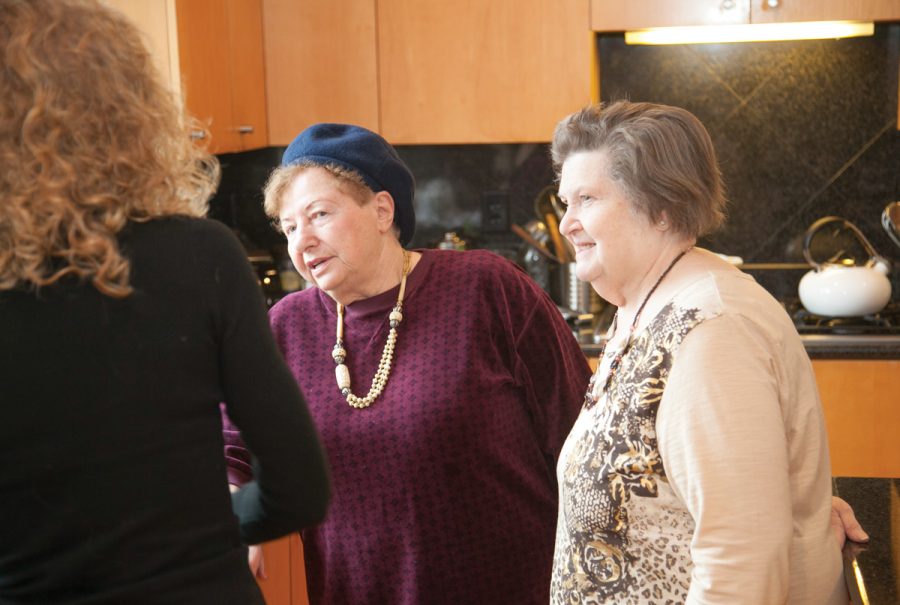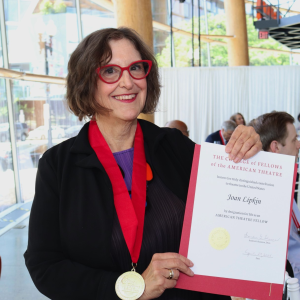Warm up with hearty winter borscht
Published January 21, 2015
Many of us think of borscht as classic Russian cuisine, as do most Russians. In actuality, borscht has its humble origins in Ukraine. And much like cholent, a Sabbath stew made with beans and potatoes and seasoned with meat, winter borscht is a hearty soup conceived out of necessity. Usually made from water and beets back then, it could be embellished with whatever affordable meats and vegetables were available, making it nourishing enough on its own to feed a family for days.
Borscht is still a culinary mainstay throughout Eastern Europe and can be found on the menus of some Russian restaurants around the world. That said, it is unlikely that any two chefs or any two ethnic Jews make borscht in the same way. Indeed, were you to ask an Ashkenazi Jew, a Mountain Jew, a Bukharan Jew, a Karaite Jew, a Krymchak Jew and a Georgian Jew to give you a list of ingredients used to make borscht, you would get different lists.
Most of those lists, however, would include beets as the key ingredient, lending borscht its characteristic pink hue and sweetness. Whether those beets are raw, roasted, chopped, sliced or grated is up for debate. While many cooks make their borscht with cabbage, some will use only red cabbage and others only green. Other vegetable additions might include onions, leeks, garlic, ginger root, carrots, potatoes, celery root, celery stalks, spinach, turnips and parsnips.
Most Jewish winter borschts are made with flanken, beef stew meat, marrowbones or goose. Traditional non-Jewish Ukranian borscht is made with pork and pork bones.
Any variety of herbs, spices and sweeteners might be included for flavor. Salt, ground black pepper, bay leaves, parsley, caraway seeds, fresh dill, dried basil, paprika, sugar, brown sugar and honey are just some of the options. And to balance the sweetness of the beets and to set their color, cooks use lemon juice, red-wine vinegar, cider vinegar, sour salt or kvas (a fermented liquid made by soaking pumpernickel bread in water for days).
Many years ago, Jews from Ukraine would use rozl, a beet broth made by pouring boiling water over the beets and then letting them soak and ferment for a month. The rozl was used in place of plain water.
My parents came to the United States from Poland, so I was familiar with borscht, but only the summer version. My mother would make the ruby-red broth and serve it cold, garnished with smetana (a thick, Eastern European sour cream), chopped hard-boiled eggs and chopped scallions. I loved it. I don’t, however, recall ever having the heartier winter version.
So, with our spate of freezing temperatures earlier this month, it seemed like the perfect time to try making a pot. I cooked the borscht during the day for a few hours, and my husband and I each had a couple of bowls of the soup with fresh bread and a salad for dinner that evening. It was good, but as I’ve been known to say, not so aiy, yaiy, yaiy.
I wondered whether I had left something out or done something wrong. After all, borscht has such a loyal following. What was I missing?
Label it chutzpah or raw courage, I called my friend Felicia Wertz. Felicia was born in Wyszków, Poland, and grew up in orphanages in Russia and Poland. While she didn’t have the opportunity to cook during those years, she lovingly recalled the nights when borscht was served. Although she is now an avid cook who credits Julia Child’s television shows for teaching her, she told me that she doesn’t make borscht.
“However,” she said, “I love borscht, and I know when I’ve had a good one. Better yet, I have a friend from Ukraine who grew up on borscht.”
That friend is Lina Melamed, whom Felicia met while taking her history as part of the St. Louis Holocaust Museum’s Oral History Project. Lina was born in Kiev in 1933. In 1941, while her father served in the Soviet army, she and the rest of her family were evacuated to the Ural Mountains of Russia for the duration of World War II.
I invited Felicia and Lina to my house for tea. I didn’t let them know that the pot of borscht I’d made the night before would be warming on the stove. I was hoping they wouldn’t mind critiquing it.
When they arrived, we started off in my living room talking about borscht. Lina recalled her mother making soups every night as a first course during the cold winters. Among those soups was one of her favorites: borscht.
“Of course,” Lina told us, “my mother made Jewish borscht, which means she did not use pork or garlic. She made her borscht just from fresh grated beets, of course, pieces of beef and bones when she could get them, and cabbage, potatoes, celery root, onions, kvas and water. We would eat the soup with Ukrainian bread, which is sprinkled with cumin seed.”
She smiled at the memories and said, “Oh, that borscht was so delicious.”
With some hesitation, I said: “I made a pot of borscht last night. I was wondering whether you would be willing to taste it and tell me how I can make it better.”
Felicia and Lina looked at each other and began laughing. “Of course,” they both said, and off we went to the kitchen.
Nervously, I lifted the lid. They peered into the pot and, in unison, declared, “Perfect!”
I handed them each a spoon and watched as they dipped into the steaming pot and took a taste.
“Hmmm,” Felicia said, “it needs some lemon juice.”
“And more salt,” Lina added.
I squeezed in the juice of half a lemon and lifted the saltshaker.
“Not too much,” Felicia cautioned.
I obeyed.
And then I ladled borscht into three large bowls, garnished each with some fresh minced parsley, passed around a dish of fresh garlic cloves that I pounded to a paste with salt in a mortar with pestle, along with a smaller dish of lemon juice. I set the saltshaker next to Lina’s bowl.
Lina sprinkled salt into her bowl. Felicia and I both added some of the garlic paste and lemon juice.
Felicia took a taste and nodded. “Yes, now that’s delicious.”
We both turned to Lina, who was tasting her soup, eyes closed, an ethereal expression on her face.
“Ah,” she whispered, “it’s a mechaieh.”
We eventually did have tea, by the way, accompanied by my homemade chocolate babka.
That night my husband and I enjoyed borscht again for dinner. Really enjoyed! Letting the borscht sit overnight had done wonders to enrich the flavor and build depth. And the addition of the garlic paste made both of us realize that borscht, indeed, is a delicious winter meal.
There is no better time to enjoy a pot of home-cooked borscht.
The recipe below is the one I used, altered to take into account both Felicia’s and Lina’s suggestions. Feel free to incorporate any other of your favorite vegetables, or select from the options I mentioned above.
(Plan to make soup at least one day in advance of serving. The flavor will continue to develop over three to four days.)
Margi Lenga Kahn is the mother of five and grandmother of five. A cooking instructor at the Kitchen Conservatory, she is working on a project to preserve the stories and recipes of heritage cooks. She welcomes your comments and suggestions at [email protected].















